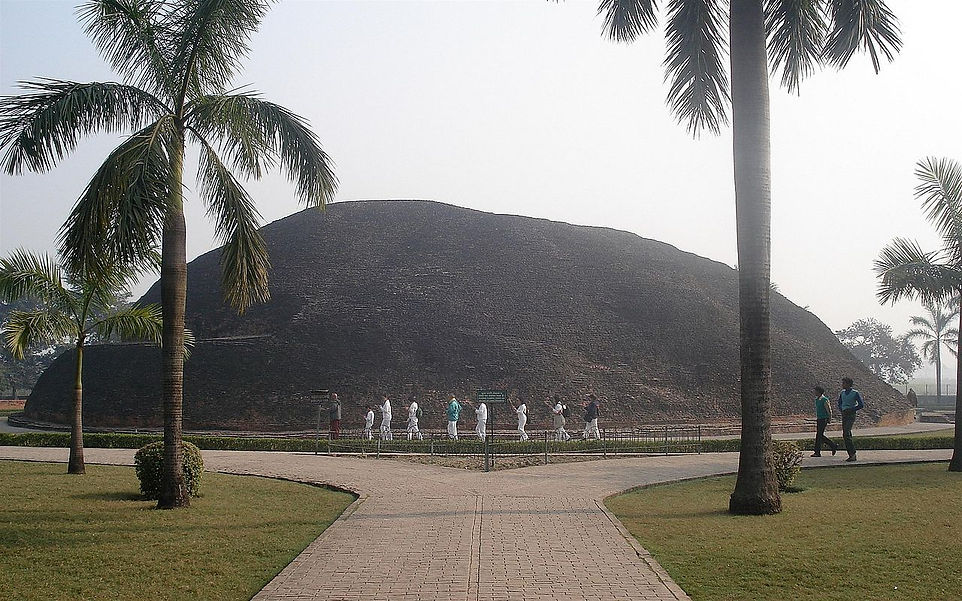IKONI-USKONTOKUVAT
Luonnonuskonnot Hindulaisuus Buddhalaisuus Taolaisuus Kungfutselaisuus Shintolaisuus Juutalaisuus Islam
ORTODOKSINEN KIRKKO KATOLINEN KIRKKO KIRKON ERO 1054 PROTESTANTTISET KIRKOT LUTERILAINEN LIRKKO REFORMOIDUT KIRKOT ANGLIKAANINEN KIRKKO MUITA PROTESTANTTISIA YHTEISÖJÄ SUOMEN KIRKON HISTORIAA
RAAMATTU
LUONNONUSKONNOT HINDULAISUUS BUDDHALAISUUS TAOLAISUUS KUNGFUTSELAISUUS SHINTOLAISUUS JUUTALAISUUS KRISTINUSKO ISLAM
PYHÄT RAKENNUKSET-
TEMPPELIT, PYHÄKÖT, STUPAT
SIDDHARTHA GAUTAMA PYHÄ KIRJA VALAISTUMINEN-NIRVANA JUMALAKÄSITYS MUNKIT PYHÄT KAUPUNGIT PYHÄT RAKENNUKSET PÄÄSUUNNAT :HINAJANA MAHAJANA TIIBETIN BUDDHALAISUUS ZEN VIDEOT
Stupan alkuperä on Intiassa . Siellä oli tapana koota suuri kivikasa merkittävien hallitsijoiden tai henkilöiden hautojen päälle. Myöhemmin vainajan tuhkat koottiin erityiseen lippaaseen, joka pantiin stupan sisään säilytykseen. Näin tehtiin Buddhankin kuoltua. Ensin tuhka koottiin yhteen lippaaseen, minkä jälkeen tuhka jaettiin kahdeksaan osaan ja kaikki lähetettiin Buddhan oman toivomuksen mukaan kahdeksaan eri kaupunkiin, missä niitä varten oli rakennettu erityinen rakennus. Vielä rakennettiin kaksi muuta stupaa: toinen Buddhan ruumiin polttopaikan päälle , toinen säilyttämään alkuperäistä uurnaa.

Kuvassa näkyy vielä alkuperäinen hautakummun muoto, koristeena vain "sateenvarjo".




Kuningas Asokan aikana käytössä ollut stupa-muoto , joka on saanut myöhemmin lisäksi terassin seremoniallista stupan kiertämistä varten
100-200 jKr. stupien kehitystä
Stupien kehitys 500- luvulta lähtien osoittaa niiden kehittyvän kohti itäaasialaista pagodi-muotoa
Stupan muodon synnystä buddhalainen legenda kertoo:" Buddha taitteli viittansa ja laski sen maahan kuvaamaan perustusta, sujautti kerjuukulhonsa ylösalaisin viitan päälle kuvatakseen pyhäinjäännöskammiota ja asetti niiden ylle päivänvarjonsa kuvaamaan torniksi kohoavaa huippua."
Buddhalaisuus syntyi "munkkiuskonnoksi". Uskonnolla ei ollut yhteisiä rituaaleja vaan uskontoa harjoitettiin yksityisesti . Tästä syystä vain luostareissa tarvittiin yhteisiä kokoontumistiloja . Kaikki Buddhan elämään liittyvät paikat muodostuivat pyhiinvaelluskohteiksi. Näille paikoille kohosivat pyhimmät stupat.
Elämänsä tärkeimmät paikat Buddha ilmoitti itse oppilailleen:
Lumbini:
Siddhartha Gautaman syntymäpaikka. Tänne kuingas Asoka teki pyhiinvaellusmatkan 200-luvulla eKr käännyttyään buddhalaisuuteen ja kustansi stupan rakentamisen. Asoka pystytti myös pylvään, mutta salama katkaisi sen. Kaatunut pylväs löytyi 1800-luvulla ja on nyt museossa. Pylväässä ollut Asokan aikainen piirtokirjoitus todisti tämän Buddhan syntymäpaikaksi. Nykyinen temppeli on myöhemmältä ajalta.
Kuva: Niraj Bhusal

Bodh Gaya
Siddhartha Gautama saavautti valaistumisen boddhipuun alla Nairanja-joen rannalla. Tällä paikalla on nykyään mahtava Mahabodhin temppeli. Temppelin päällä on stupa, joka sisältää buddhan pyhäinjäännöksiä. Temppelissä voidaan harjoittaa rituaaleja.
Temppelistä tiedetään, että se on ollut olemassa jo ainakin 600 jKr., jolloin siellä vieraili kiinalainen pyhiinvaeltaja, joka kirjoitti muistiinpanoja matkastaan. Temppelin pyhin paikka on valaistumisen istuin, jolla Siddharthan kerrotaan valaistuneen.
Brittien valta-aikana Intiassa rakennus oli hylätty ja huonossa kunnossa, mutta myöhemmin britit kunnostivat rakennukset ja sitä ympäröivän puiston nykyiseen kuntoon.
Temppelisalin sisällä on valtava Buddha-patsas istuvassa asennossa.

Saranath

Kuva: CC BY-SA
Dhamekhin stupa on gasellipuistossa, missä Buddha piti ensimmäisen saarnansa valaistumisensa jälkeen. Tästä katsotaan opin pyörän, dharman lähteneen liikkeelle.

Kuva: CC BY-SA 2.5
Kushinagara
Kushinagarasta tuli pyhä kaupunki, koska se jäi Buddhan elämän viimeiseksi paikaksi: hän kuoli siellä ja siirtyi parinirvanaan. Ramabhar Stupa on rakennettu sille paikalle, missä Buddhan ruumis poltettiin.

Buddhan ruumiin polttopaikka. Stupa edustaa alkuperäistä muotoa, josta kehitys lähti etenemään kohti itäaasialaista pagodimuotoa.

Gasellipuisto, missä Buddha piti ensimmäisen saarnansa ja sangha syntyi.


Buddhan ruumiin polttopaikka. Stupa edustaa alkuperäistä muotoa, josta kehitys lähti etenemään kohti itäaasialaista pagodimuotoa.
Lähteet: Michael Jordan: Itämaista viisautta s.98101 Otava 2000
Arild Hvidtfeldt:Otavan suuri maailmanhistoria osa Suuret uskonnot s.140-142 Otava 1983

